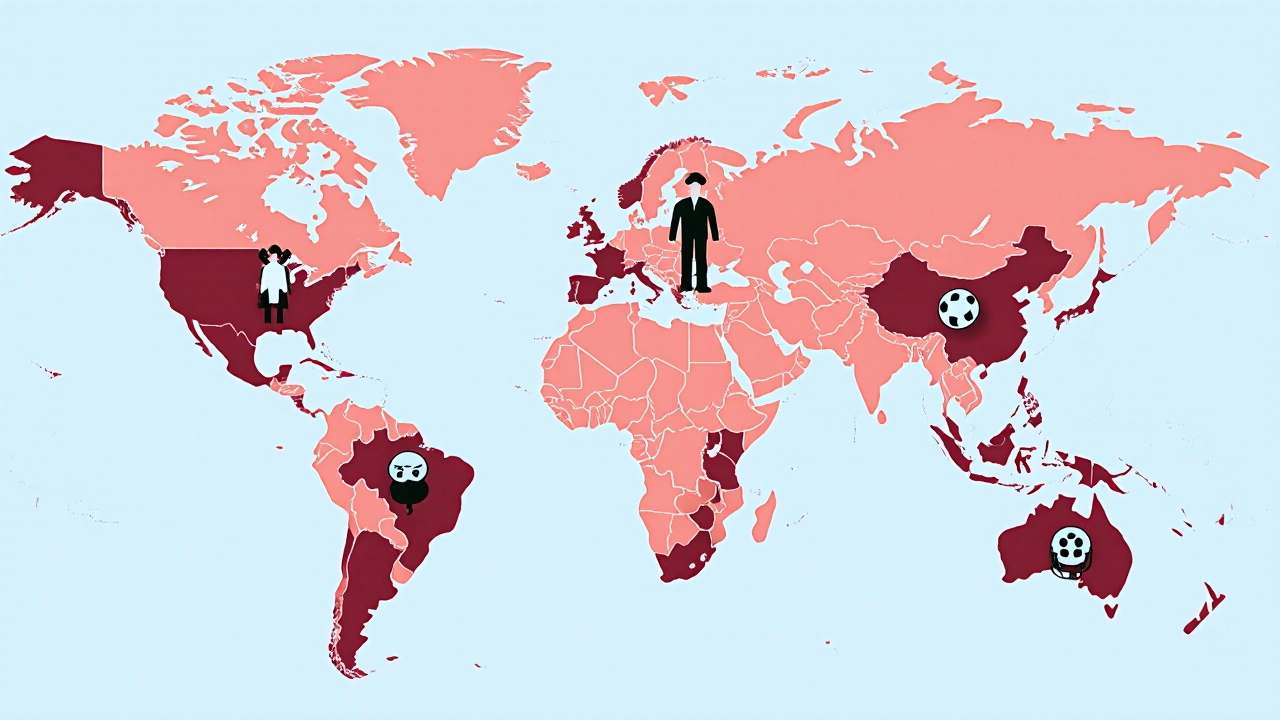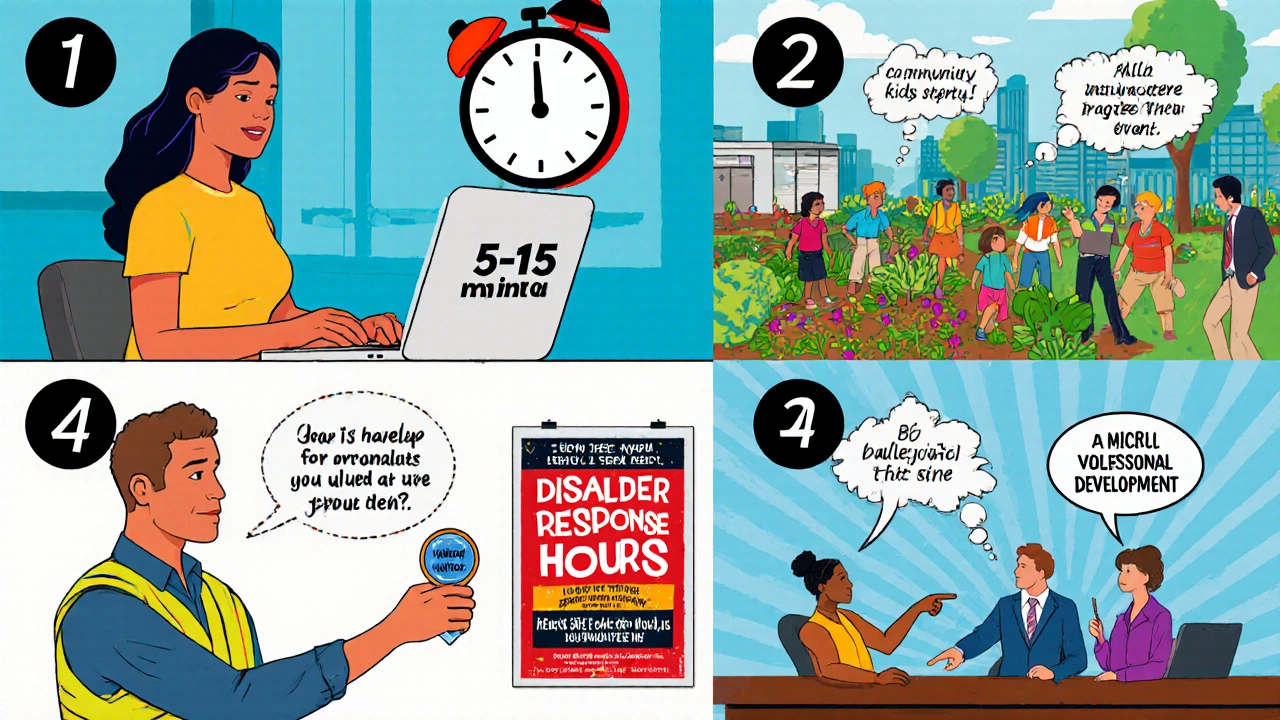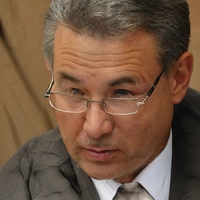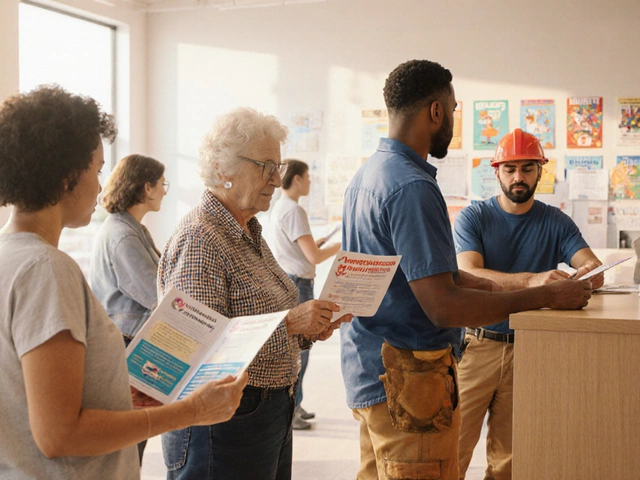Gender Volunteer Gap Calculator
Compare Volunteer Participation Rates by Country
Explore how gender differences in volunteering vary across nations using data from the UN Volunteers program and national statistics.
Select a country to view data
Ever wondered which gender shows up most often on a volunteer roster? The answer isn’t as simple as “men do it” or “women do it.” It depends on age, region, type of work, and the motivations that drive people to give their time. This article breaks down the latest data, explains why the gap exists, and offers practical tips for groups that want a more balanced volunteer pool.
Understanding Volunteer Participation Metrics
Before diving into the numbers, it helps to know how researchers measure volunteer activity. The most common metric is the Volunteer Participation rate, which represents the percentage of a population that reports regular unpaid work for a nonprofit or community cause within a given year. Surveys like the U.S. Volunteer Service Annual Report, the European Volunteer Time Use Survey, and New Zealand’s Census Volunteer Question all collect this data, but they differ in definitions of “regular” and the time frames they use.
Another key metric is hours contributed per volunteer, which shows depth of involvement. A higher rate of volunteers doesn’t automatically mean more impact if each person only contributes a few hours.
Global Overview of Gender and Volunteering
Across most high‑income countries, women consistently outnumber men in volunteer participation. According to the United Nations Volunteers (UNV) 2023 global report, 58% of volunteers were women, 42% men. In the United States, the Corporation for National and Community Service reported a 33% participation rate for women versus 24% for men in 2022.
However, the gap narrows or flips in certain contexts. In the United Kingdom, men dominate volunteering in sports clubs and emergency services, while women lead in health‑related charities and education programs. In some low‑ and middle‑income regions, cultural norms and limited leisure time push men into community work such as infrastructure projects, resulting in higher male participation rates.
Key Drivers Behind Gender Differences
- Social Expectations: Traditional gender roles often steer women toward caregiving and education, which are heavily represented in the nonprofit sector.
- Motivational Triggers: Studies from the Volunteer Time Use Survey show women are more motivated by “helping others” and “building community,” while men often cite “skill development” and “networking.”
- Work‑Life Balance: Flexible, short‑term opportunities (e.g., event staffing) attract more women who juggle family responsibilities.
- Access to Opportunities: Men may have better access to physically demanding roles (e.g., disaster response) that are less advertised to the general public.
These factors interact. For instance, a woman who works full‑time may still volunteer weekly at a school because the role fits her schedule and aligns with her values.

Barriers That Affect Each Gender
Understanding what stops people from volunteering is as important as knowing what pushes them in.
Women’s Common Barriers:
- Limited childcare options during volunteer events.
- Perceived lack of safety in certain environments (e.g., late‑night street clean‑ups).
- Assumption that their contributions are “less valuable” compared to male‑dominated skill‑based roles.
Men’s Common Barriers:
- Stigma around caregiving or community service being “unmasculine.”
- Career pressures that prioritize paid overtime over unpaid work.
- Lack of awareness about volunteer opportunities that match their skill set.
Regional Focus: New Zealand’s Volunteer Landscape
In my hometown of Wellington, the 2024 Census added a specific volunteer question for the first time. The results showed 42% of women had volunteered in the past year compared to 31% of men. That’s a gap of 11 points, slightly higher than the OECD average.
Why the gap? New Zealand’s strong community‑oriented culture encourages women to get involved in early‑childhood education, health clinics, and environmental clean‑ups-all areas where local NGOs actively recruit. Men, on the other hand, are more represented in disaster‑response squads and rural farming support groups, which have stricter entry requirements and less flexible schedules.

Strategies to Boost Under‑Represented Gender Participation
- Flexible Scheduling: Offer micro‑volunteering tasks (5‑15 minutes) that can be completed from home.
- Targeted Outreach: Use language that resonates with the desired gender. For men, highlight skill‑building and leadership; for women, emphasize community impact and family‑friendly settings.
- Provide Support Services: On‑site childcare, safe transport, and clear safety protocols can remove practical hurdles.
- Showcase Role Models: Feature stories of volunteers who break stereotypes-e.g., male nurses or female construction volunteers.
- Partner with Employers: Encourage corporate volunteering programs that recognize hours as part of professional development.
Implementing even a few of these ideas can shrink the gender gap and improve overall volunteer capacity.
Quick Reference: Gender Volunteer Rates by Country (2023)
| Country | Women | Men | Gap |
|---|---|---|---|
| United States | 33 | 24 | 9 |
| United Kingdom | 29 | 28 | 1 |
| Canada | 31 | 22 | 9 |
| Australia | 30 | 21 | 9 |
| New Zealand | 42 | 31 | 11 |
| Germany | 27 | 20 | 7 |
| Japan | 22 | 29 | -7 |
These figures illustrate that while women lead in most Western nations, Japan is one of the few countries where men volunteer more often, highlighting cultural nuances.
Frequently Asked Questions
Do women always volunteer more than men?
In most high‑income countries, women have higher participation rates, but the gap varies by sector, age group, and cultural context. Some regions, like Japan, show higher male volunteering.
What age groups have the smallest gender gap?
Young adults (18‑30) often display a narrower gap because university clubs and sport teams attract both genders equally.
How can nonprofits attract more male volunteers?
Highlight skill development, leadership opportunities, and clear pathways to advance. Partner with employers to recognize volunteer hours as professional experience.
What are the main reasons women volunteer?
Altruism, community connection, and personal fulfillment rank highest. Many also cite flexible, family‑friendly roles as key draws.
Is there a reliable source for up‑to‑date gender‑volunteer data?
The United Nations Volunteers annual report, national statistical agencies (e.g., U.S. Census Bureau, Statistics New Zealand), and the World Bank’s civil society datasets provide the most current figures.
Armed with this knowledge, volunteer managers can design smarter recruitment strategies and move toward a more balanced, effective volunteer force.


